1. Klonsky ED. The functions of deliberate self-injury: a review of the evidence. Clin Psychol Rev. 2007; 27(2):226–239. PMID:
17014942.

2. Klonsky ED. Non-suicidal self-injury in United States adults: prevalence, sociodemographics, topography and functions. Psychol Med. 2011; 41(9):1981–1986. PMID:
21208494.

3. Whitlock J, Muehlenkamp J, Purington A, Eckenrode J, Barreira P, Baral Abrams G, et al. Nonsuicidal self-injury in a college population: general trends and sex differences. J Am Coll Health. 2011; 59(8):691–698. PMID:
21950249.

4. Son Y, Kim S, Lee JS. Self-injurious behavior in community youth. Int J Environ Res Public Health. 2021; 18(4):1955. PMID:
33671424.

5. Andover MS, Pepper CM, Ryabchenko KA, Orrico EG, Gibb BE. Self-mutilation and symptoms of depression, anxiety, and borderline personality disorder. Suicide Life Threat Behav. 2005; 35(5):581–591. PMID:
16268774.

6. Whitlock J, Eckenrode J, Silverman D. Self-injurious behaviors in a college population. Pediatrics. 2006; 117(6):1939–1948. PMID:
16740834.

7. Joiner T. Why People Die by Suicide. Cambridge, MA, USA: Harvard University Press;2007.
8. Kim CL, Lee SH, Chang H. Influence of non-suicidal self-injury on suicide attempt among depressed patients. Korean J Clin Psychol. 2018; 37(4):465–478.

9. Hamza CA, Willoughby T. Nonsuicidal self-injury and suicidal risk among emerging adults. J Adolesc Health. 2016; 59(4):411–415. PMID:
27485906.

10. Olfson M, Wall M, Wang S, Crystal S, Gerhard T, Blanco C. Suicide following deliberate self-harm. Am J Psychiatry. 2017; 174(8):765–774. PMID:
28320225.

11. Tak CH, Yoon B, Kim KM, Sea YH, Jung HR, Song JH, et al. Predictive factors of self-injurious behavior with suicidal ideation in adolescents. Mood Emot. 2017; 15(3):149–155.
12. Bae Y, Seong Y, Kim SH, Kim S. Clinical characteristics of non-suicidal self-injury and suicide attempts among psychiatric patients in Korea: a retrospective chart review. Psychiatry Investig. 2020; 17(4):320–330.

13. Klonsky ED, Olino TM. Identifying clinically distinct subgroups of self-injurers among young adults: a latent class analysis. J Consult Clin Psychol. 2008; 76(1):22–27. PMID:
18229979.

14. Kleiman EM, Ammerman BA, Kulper DA, Uyeji LL, Jenkins AL, McCloskey MS. Forms of non-suicidal self-injury as a function of trait aggression. Compr Psychiatry. 2015; 59:21–27. PMID:
25778908.

15. Nock MK, Prinstein MJ, Sterba SK. Revealing the form and function of self-injurious thoughts and behaviors: A real-time ecological assessment study among adolescents and young adults. J Abnorm Psychol. 2009; 118(4):816–827. PMID:
19899851.

16. Rodríguez-Blanco L, Carballo JJ, Baca-García E. Use of ecological momentary assessment (EMA) in non-suicidal self-injury (NSSI): a systematic review. Psychiatry Res. 2018; 263:212–219. PMID:
29574356.

17. Andrewes HE, Hulbert C, Cotton SM, Betts J, Chanen AM. An ecological momentary assessment investigation of complex and conflicting emotions in youth with borderline personality disorder. Psychiatry Res. 2017; 252:102–110. PMID:
28259033.

18. Armey MF, Crowther JH, Miller IW. Changes in ecological momentary assessment reported affect associated with episodes of nonsuicidal self-injury. Behav Ther. 2011; 42(4):579–588. PMID:
22035987.

19. Sansone RA, Wiederman MW, Sansone LA. The Self-Harm Inventory (SHI): development of a scale for identifying self-destructive behaviors and borderline personality disorder. J Clin Psychol. 1998; 54(7):973–983. PMID:
9811134.

20. Shiffman S, Stone AA, Hufford MR. Ecological momentary assessment. Annu Rev Clin Psychol. 2008; 4(1):1–32. PMID:
18509902.

21. First MB, Williams JB, Karg RS, Spitzer RL. Structured Clinical Interview for DSM-5 Disorders Clinician Version (SCID-5-CV). Arlington, VA, USA: American Psychiatric Association Publishing;2016.
22. Oh MY, Park YC, Oh SW. The Korean Version of the Structured Clinical Interview for DSM-5 Disorders Clinician Version (SCID-5-CV). Seoul, Korea: Hakjisa Publisher;2017.
23. Linehan MM, Comtois KA, Brown MZ, Heard HL, Wagner A. Suicide Attempt Self-Injury Interview (SASII): development, reliability, and validity of a scale to assess suicide attempts and intentional self-injury. Psychol Assess. 2006; 18(3):303–312. PMID:
16953733.

24. Borschmann R, Hogg J, Phillips R, Moran P. Measuring self-harm in adults: a systematic review. Eur Psychiatry. 2012; 27(3):176–180. PMID:
21696926.

25. Kim S, Woo S, Koo H, Lee J. Validation of the Korean version of the Self-Harm Inventory (K-SHI). Cogn Behav Ther Korea. 2019; 19(2):205–228.

26. Buss AH, Perry M. The aggression questionnaire. J Pers Soc Psychol. 1992; 63(3):452–459. PMID:
1403624.

27. Lee SJ. Facture structure of the Buss-Perry Aggression Questionnaire for a Korean offender population. Korean J Psychol Soc Issues. 2005; 11(2):47–71.
28. Morey LC. Personality Assessment Inventory. Odessa, FL, USA: Psychological Assessment Resources;1991.
29. Hong SH, Kim YH. A validation study of the borderline personality disorder scale in Korean university students. Korean J Clin Psychol. 1998; 17(1):259–271.
30. Gratz KL, Roemer L. Multidimensional assessment of emotion regulation and dysregulation: Development, factor structure, and initial validation of the difficulties in emotion regulation scale. J Psychopathol Behav Assess. 2004; 26(1):41–54.

31. Cho Y. Assessing emotion dysregulation: psychometric properties of the Korean version of the difficulties in emotion regulation scale. Korean J Clin Psychol. 2007; 26(4):1015–1038.

32. Weiss DS, Marmar CR. The Impact of Event Scale-Revised. Wilson JP, Keane TM, editors. Assessing Psychological Trauma and PTSD. New York, NY, USA: Guilford Press;1997. p. 399–411.
33. Horowitz M, Wilner N, Alvarez W. Impact of Event Scale: a measure of subjective stress. Psychosom Med. 1979; 41(3):209–218. PMID:
472086.

34. Lim HK, Woo JM, Kim TS, Kim TH, Choi KS, Chung SK, et al. Reliability and validity of the Korean version of the Impact of Event Scale-Revised. Compr Psychiatry. 2009; 50(4):385–390. PMID:
19486738.

35. Muthén BO, Muthén LK, Asparouhov T. Regression and Mediation Analysis Using Mplus. Los Angeles, CA, USA: Muthén & Muthén;2017.
36. Akaike H. A new look at the statistical model identification. IEEE Trans Automat Contr. 1974; 19(6):716–723.

37. Schwarz G. Estimating the dimension of a model. Ann Stat. 1978; 6(2):461–464.

38. Sclove SL. Application of model-selection criteria to some problems in multivariate analysis. Psychometrika. 1987; 52(3):333–343.

39. Nylund KL, Asparouhov T, Muthén BO. Deciding on the number of classes in latent class analysis and growth mixture modeling: a Monte Carlo simulation study. Struct Equ Modeling. 2007; 14(4):535–569.

40. Jacobson CM, Gould M. The epidemiology and phenomenology of non-suicidal self-injurious behavior among adolescents: a critical review of the literature. Arch Suicide Res. 2007; 11(2):129–147. PMID:
17453692.

41. Groschwitz RC, Plener PL, Kaess M, Schumacher T, Stoehr R, Boege I. The situation of former adolescent self-injurers as young adults: a follow-up study. BMC Psychiatry. 2015; 15(1):160. PMID:
26187150.

42. Forrester RL, Slater H, Jomar K, Mitzman S, Taylor PJ. Self-esteem and non-suicidal self-injury in adulthood: a systematic review. J Affect Disord. 2017; 221:172–183. PMID:
28647667.

43. Zelkowitz RL, Cole DA. Self-criticism as a transdiagnostic process in nonsuicidal self-injury and disordered eating: systematic review and meta-analysis. Suicide Life Threat Behav. 2019; 49(1):310–327. PMID:
29504147.

44. Burke TA, Fox K, Kautz M, Siegel DM, Kleiman E, Alloy LB. Real-time monitoring of the associations between self-critical and self-punishment cognitions and nonsuicidal self-injury. Behav Res Ther. 2021; 137:103775. PMID:
33421892.

45. Smith NB, Steele AM, Weitzman ML, Trueba AF, Meuret AE. Investigating the role of self-disgust in nonsuicidal self-injury. Arch Suicide Res. 2015; 19(1):60–74. PMID:
25010258.

46. Milnes D, Owens D, Blenkiron P. Problems reported by self-harm patients: perception, hopelessness, and suicidal intent. J Psychosom Res. 2002; 53(3):819–822. PMID:
12217457.
47. Turner BJ, Dixon-Gordon KL, Austin SB, Rodriguez MA, Zachary Rosenthal M, Chapman AL. Non-suicidal self-injury with and without borderline personality disorder: differences in self-injury and diagnostic comorbidity. Psychiatry Res. 2015; 230(1):28–35. PMID:
26315664.

48. Bracken-Minor KL, McDevitt-Murphy ME. Differences in features of non-suicidal self-injury according to borderline personality disorder screening status. Arch Suicide Res. 2014; 18(1):88–103. PMID:
24354453.

49. American Psychiatric Association. Diagnostic and Statistical Manual of Mental Disorders (DSM-5). Washington, D.C., USA: American Psychiatric Association Publishing;2013.
50. Sadeh N, Londahl-Shaller EA, Piatigorsky A, Fordwood S, Stuart BK, McNiel DE, et al. Functions of non-suicidal self-injury in adolescents and young adults with Borderline Personality Disorder symptoms. Psychiatry Res. 2014; 216(2):217–222. PMID:
24594204.

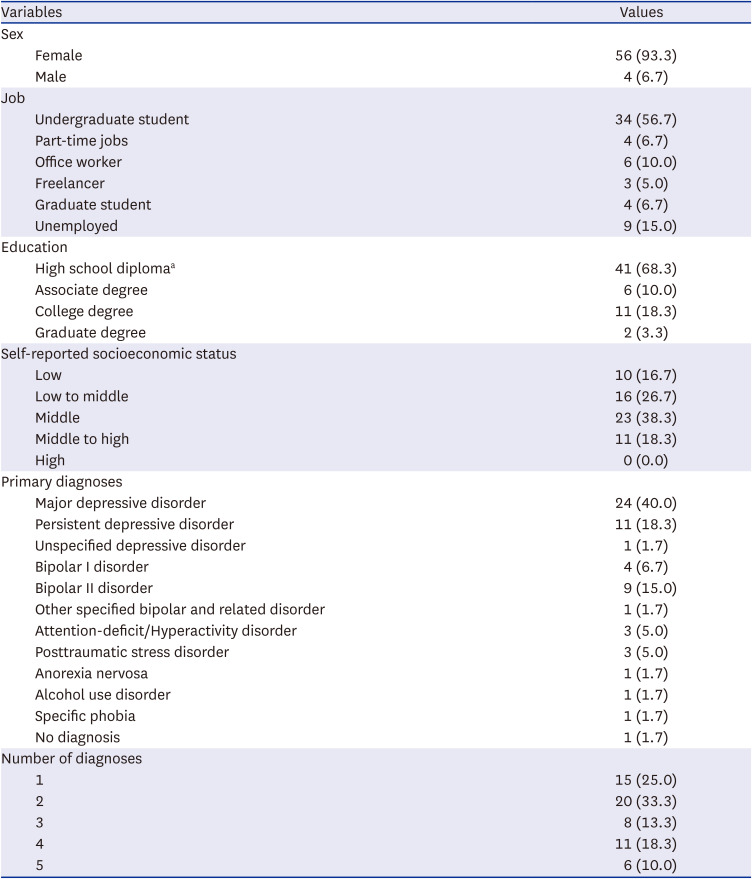

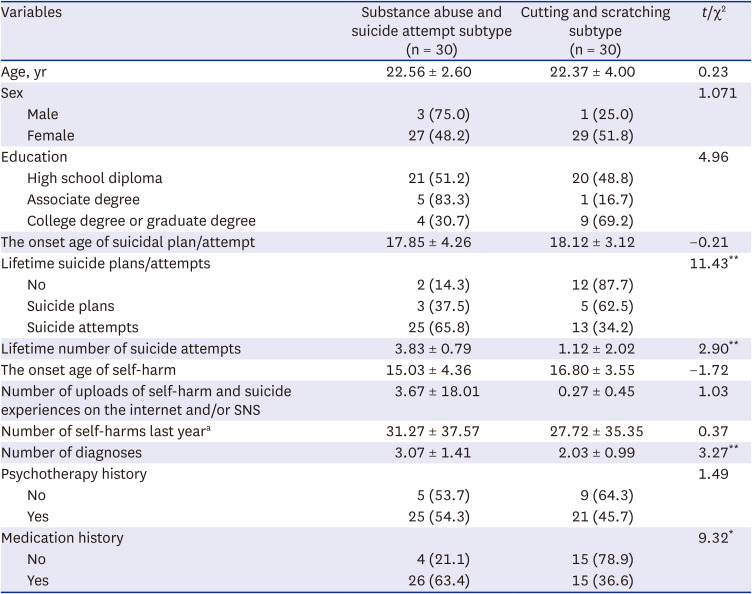

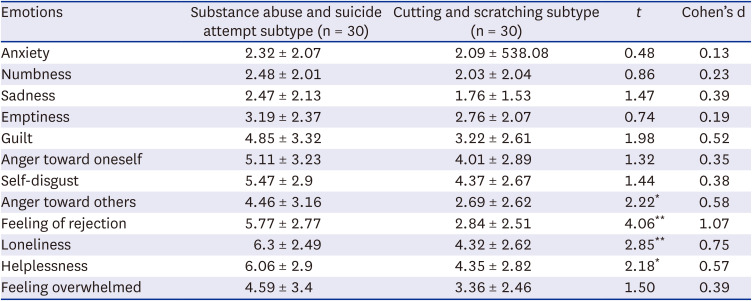





 PDF
PDF Citation
Citation Print
Print



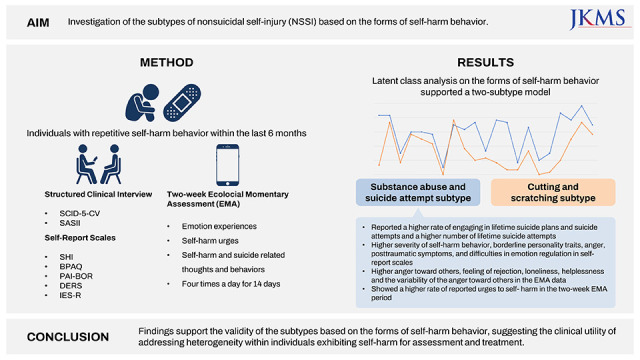
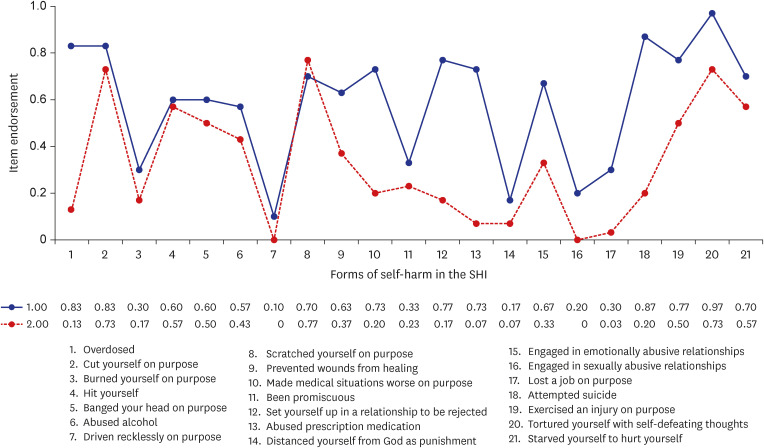
 XML Download
XML Download